
Can art and design provide another perspective to deal with the environmental crisis by reconfiguring our relationship with the Earth? Emotional well-being goes hand in hand with physical well-being; the number of people struggling with eco-anxiety, described as feelings of grief, anger, fear, and guilt about the future of the planet, is rising[1]. Closely tied to capitalism and colonialism, the climate crisis is one of the many disastrous consequences of viewing the Earth as a resource to exploit. The market, ironically, offers a huge range of self-care products to deal with climate anxiety. Berlin based Greek artist-designer Valentina Karga’s first solo show in Germany, at the Museum für Kunst und Gewerbe Hamburg, covers personal concerns around climate change, self-healing, and ethical responsibility in art and design.
The title of the show, Well Beings, in plural, is a call to recognize the worlds of the different beings co-dwelling on Earth, including and beyond the human species. Based on her personal experience with climate anxiety, Karga reconfigured conventional well-being objects such as hug pillows, weighted blankets, and oversized plush toys, inspired by the animal-like features and nature-inspired symbols of prehistoric figurines. “The roots of Well Beings date back 5,000 years” Karga says. The prehistoric figurines in the museum’s Antiquities Collection, which are the starting point of research in this show, are reminiscent of both female figures and animal forms. We do not quite know the intended purpose of these mysterious idols that allow for speculative interpretations; Karga refers to them as “prehistoric post-humans,” a nod to our interconnectedness and contemporary post-human theory.
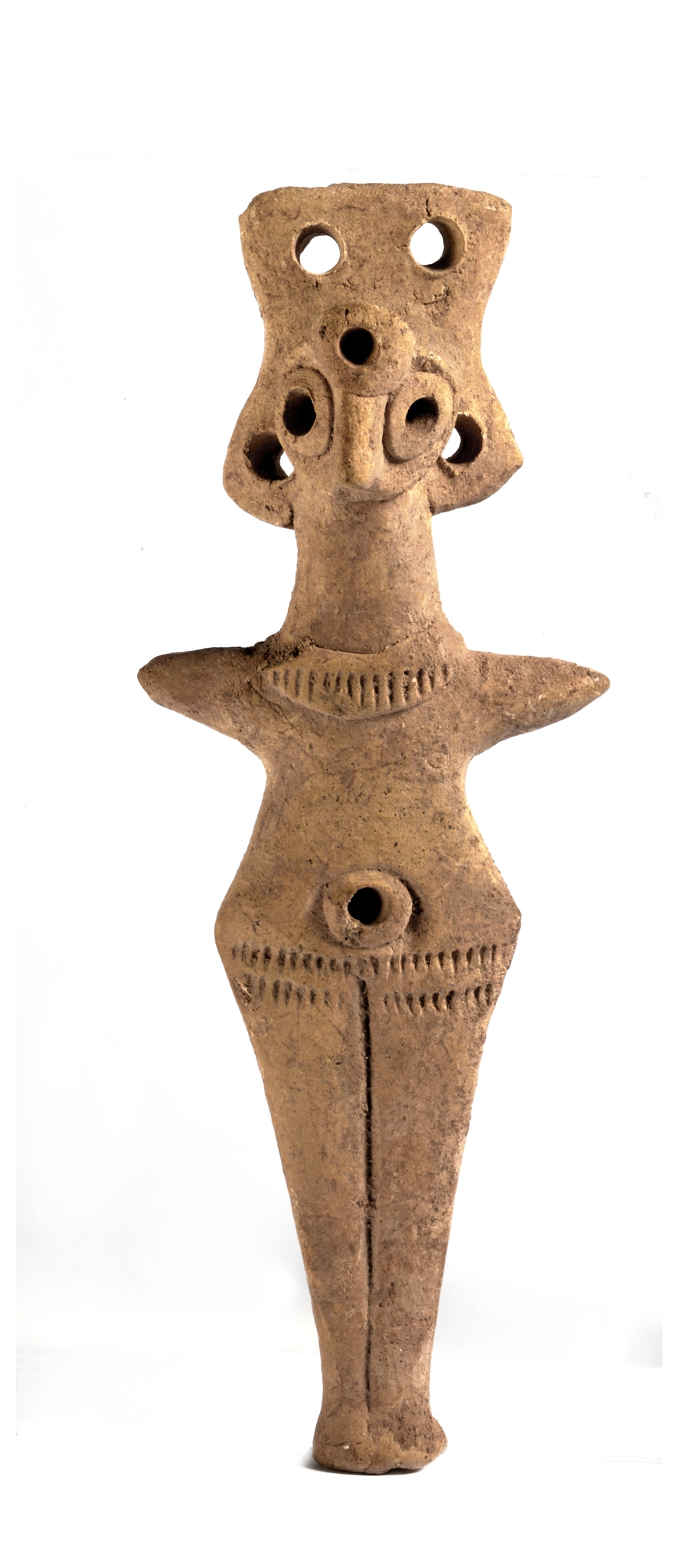

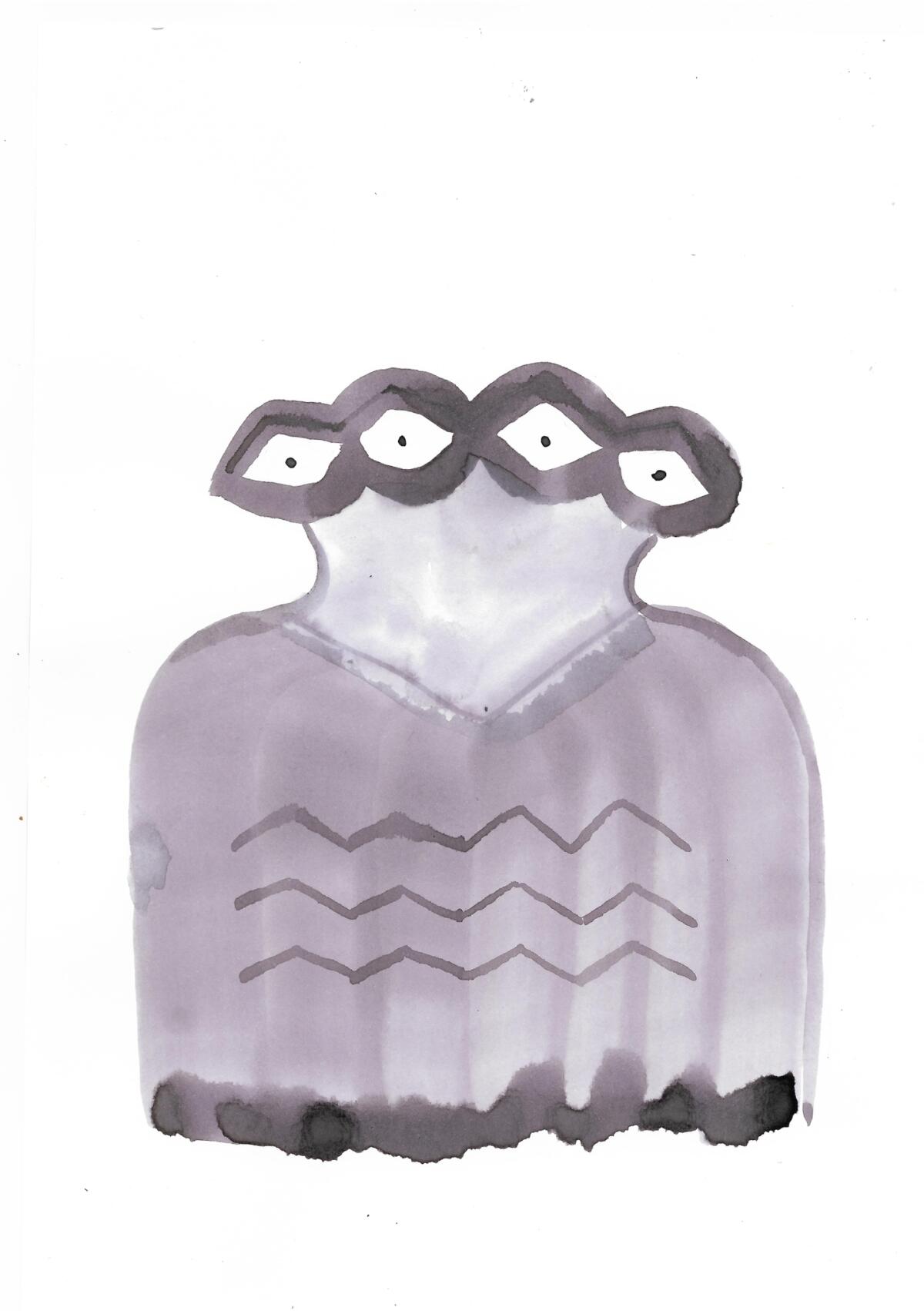
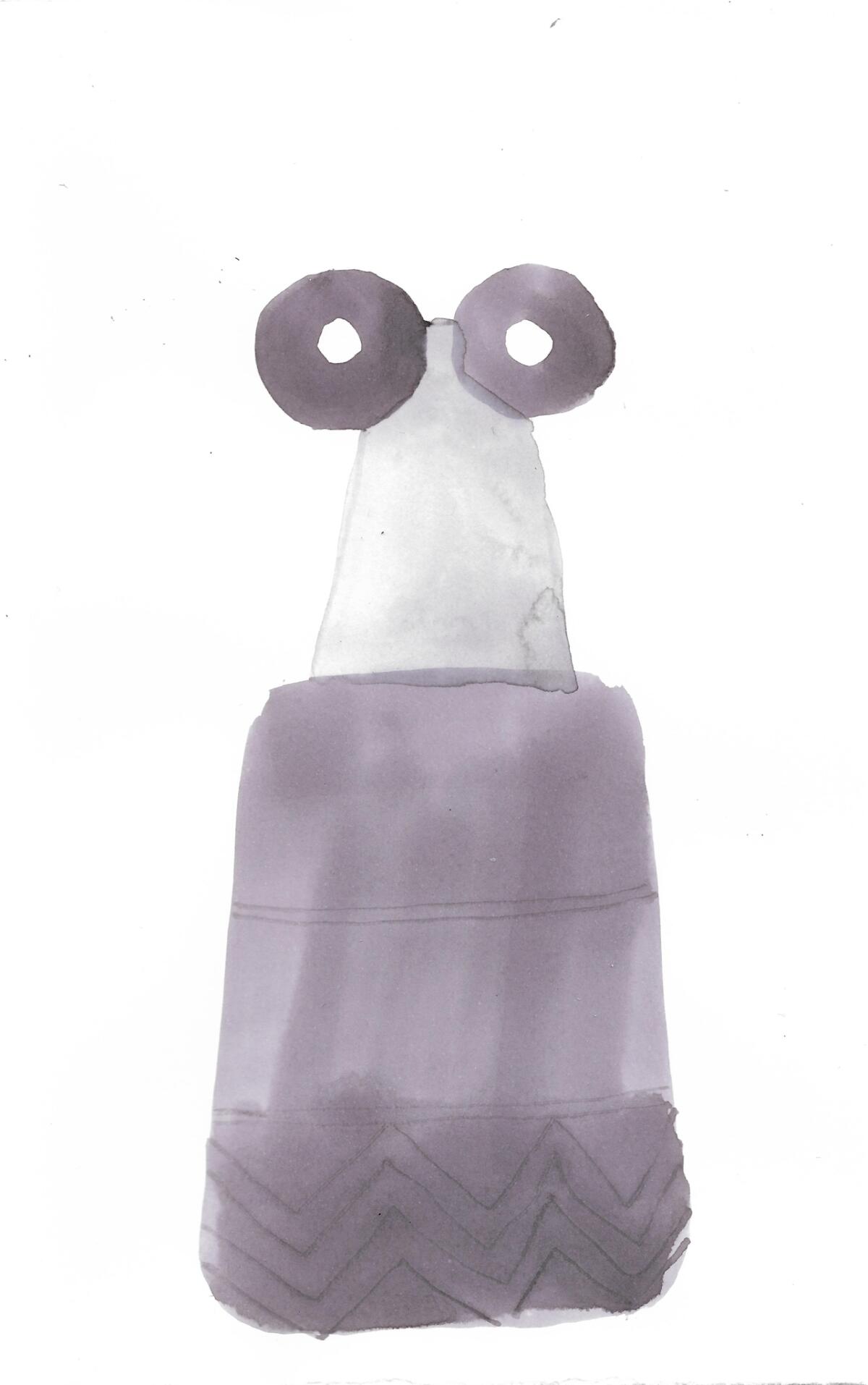
The exhibition is divided into two parts; the main room hosting an interactive parkour where visitors can engage with self-care objects, and a second room that expands on the artist’s research. The newly created works for this exhibition range from well-being objects to a video essay, from ink drawings on paper to a mural. Arriving in the main room feels like entering a playground filled with huggable items. Earth-toned pillows made from soft velvet fabric and natural materials are dyed using logwood and eucalyptus. Unlike other exhibitions at the museum where touching the objects is not allowed (contrary to an Indigenous worldview where a way of preserving the entities involves touching), the artist encourages visitors to physically engage with the objects. “Let’s cuddle,” the Collective Hug Pillows suggest. The weighted blanket filled with glass beads invites us to Cover up and get comfy. These items, as the artist relates, are inspired by healing techniques that have been used historically. Following the instructions, I pick up a body warmer, an enlarged version of a small figurine filled with grape seeds, and warm it for a couple of minutes in the microwave. I take a seat, make myself comfortable, and start breathing more deeply. I look around, slowly observe other people, families with children, the elderly, cuddling with the well beings. There is something for all ages in this interactive installation; one can rest, let their mind wander, or like children do, repurpose the objects for play.
Valentina Karga’s artistic practice is often based on a process of recycling; re-using materials and re-designing existing objects. This, as she describes, is both a challenge and source of creativity in her practice. As a design professor at the University of Fine Arts Hamburg (HFBK), Karga invites her students to reconsider the role of a designer/artist who constantly needs to make new things in an age of overproduction. Western societies have long prioritized self-interest over the well-being of the whole. Perhaps it is time to reframe the question, “Is my desire good for me?” beyond human-centered thinking. This question manifests in Hug Sofa. The artist originally intended to design a sofa herself, but eventually repurposed an existing one, adding sewn elements that resemble the facial features found on prehistoric idols. Hug Sofa further traces the artist’s roots; the eucalyptus leaves she hand-picked in her home town in northern Greece are used in extracting natural dyes to color the sofa.

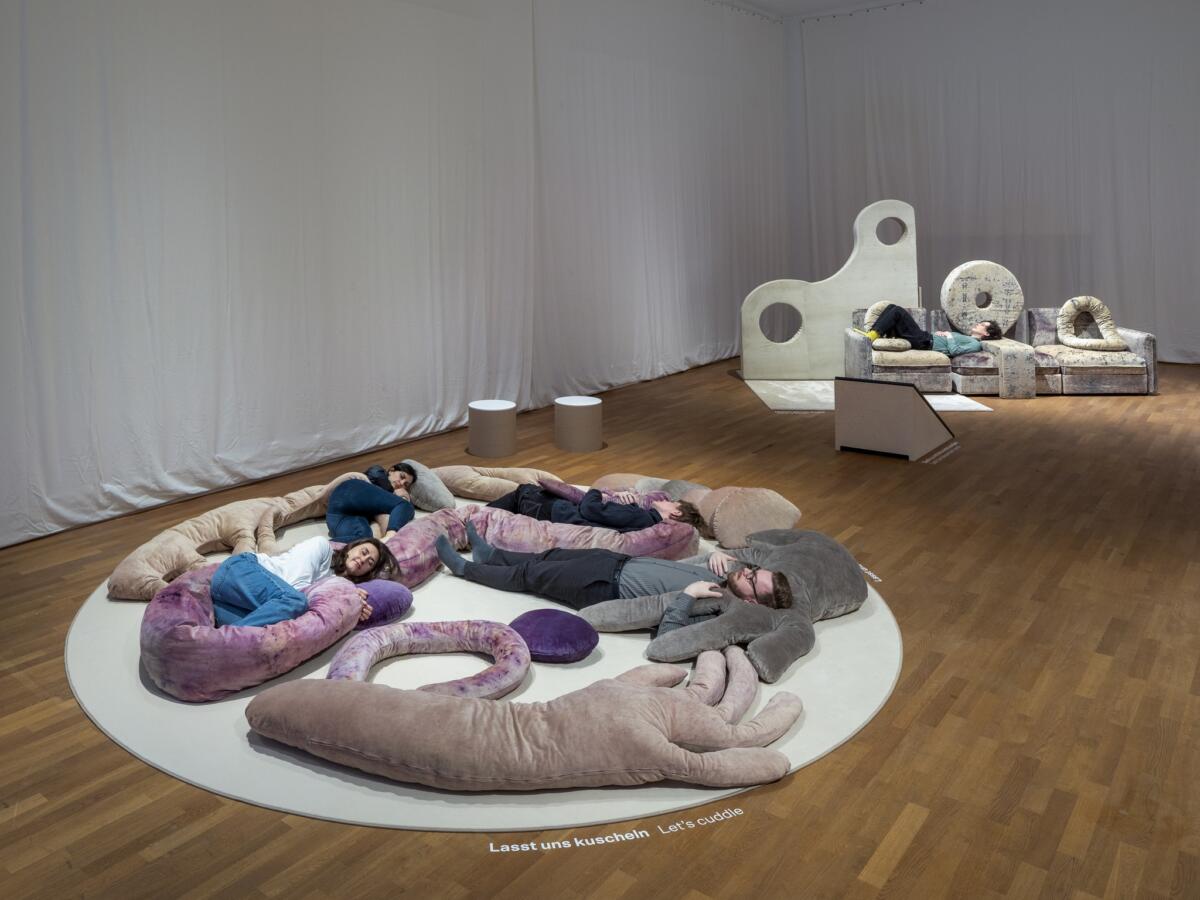
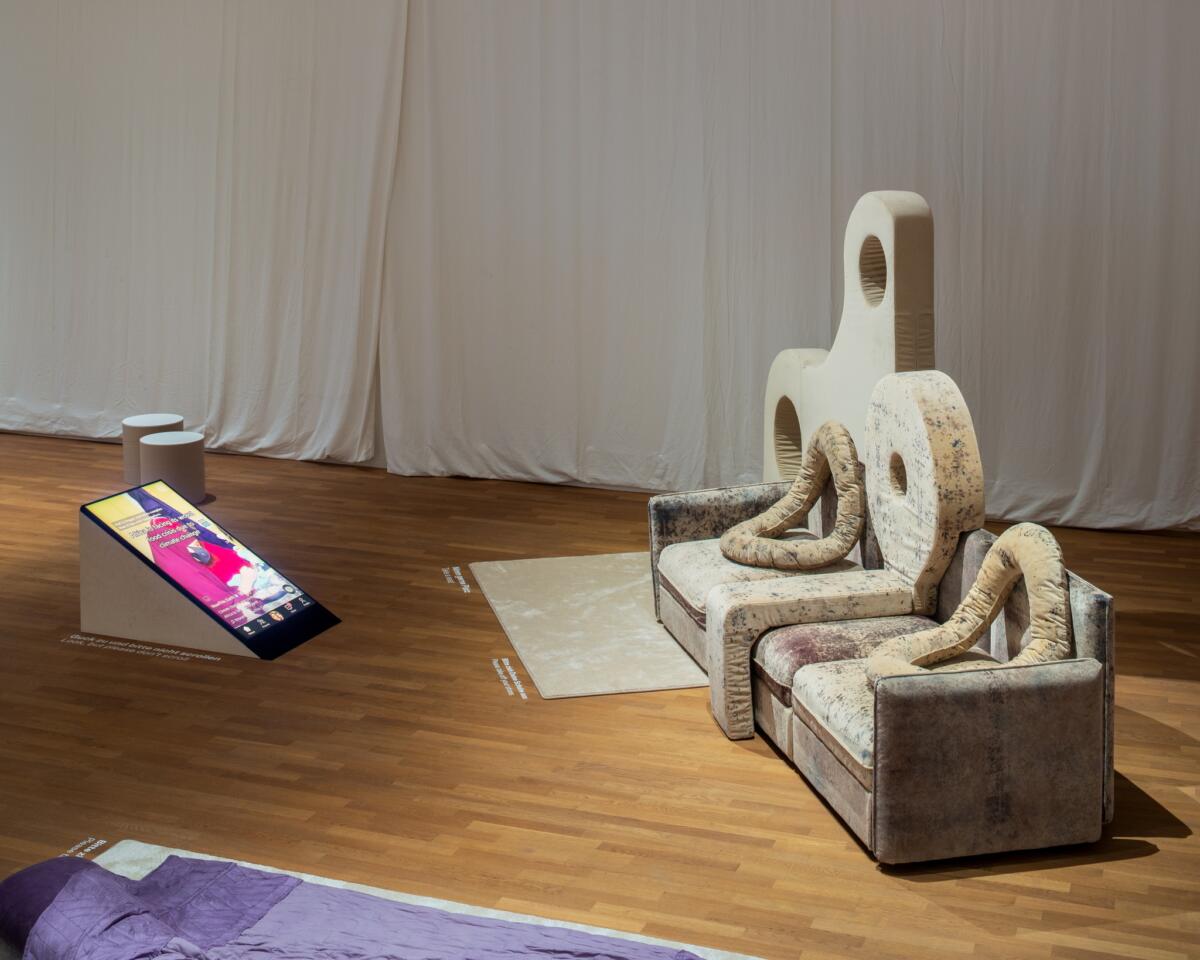

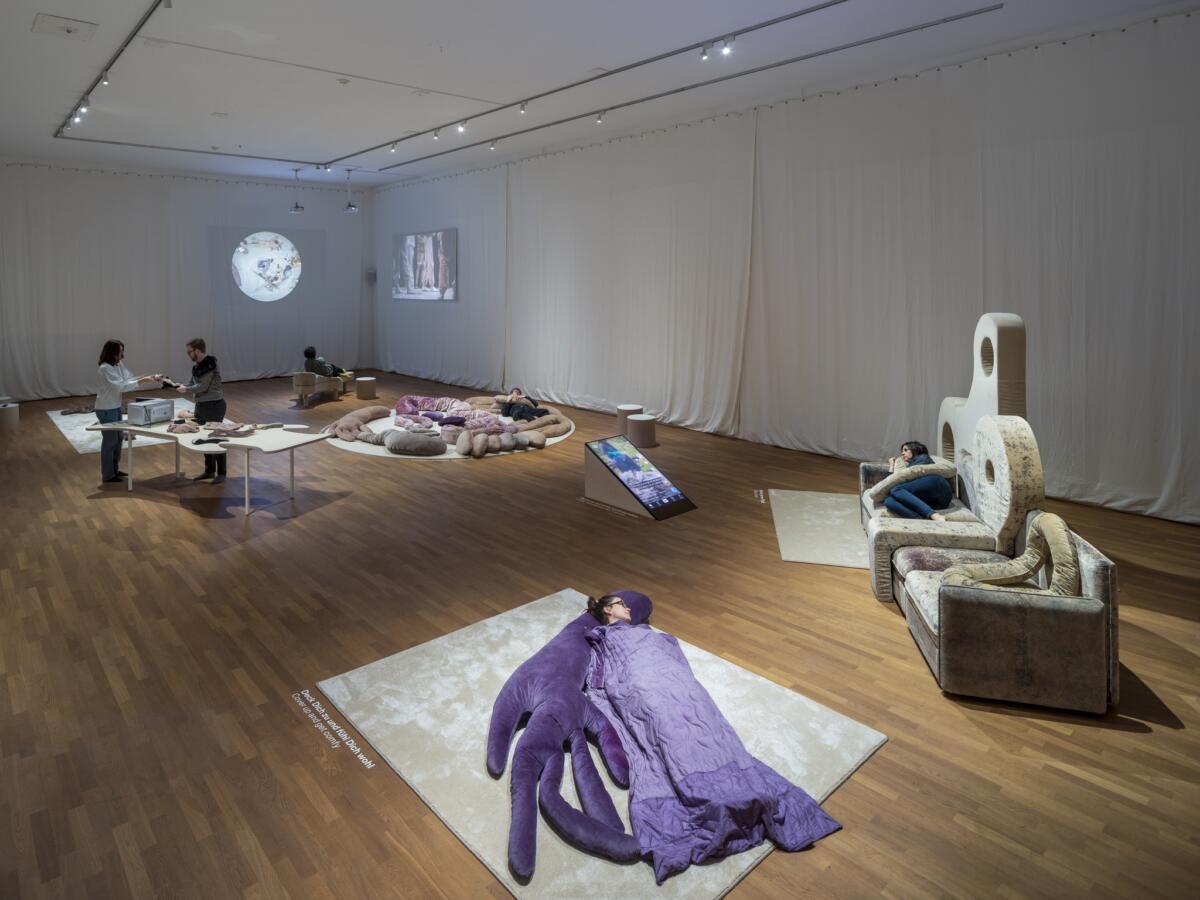

In the second part of the exhibition, the 12-minute video essay Prehistoric Posthumans – A Visual Storytelling (2023) unpacks Karga’s extensive research. The artist relates prehistoric idols to the work of Lithuanian archeologist Marija Gimbutas. In the 1970s, Gimbutas interpreted small clay figurines from the Neolithic period as “earth goddesses” and symbols of a lost matrilineal era. Valentina Karga explains that while many of Gimbutas’ male colleagues interpreted depictions of bodies with exaggerated breasts or vulvas as fertility symbols, Gimbutas saw them as part of a larger system of beliefs that prehistoric Europeans used for making sense of the world[2]. Drawn to Gimbutas’ approach, Karga speculates that these mysterious creatures can be viewed as natural beings possessing a hybrid “other” quality beyond the binary of male/female and human/non-human. The video portrays the artist carrying copies of prehistoric idols throughout her daily routine; riding the subway and collecting mushrooms, waiting at the doctor’s office and cooking. “They become my friends and companions, helping me to integrate parts of myself often othered by the capitalist patriarchal paradigm; the woman-self, the children-self and the animal or nature-self”[3] she says. The video, which ties all the displayed works together, appears central to the show, yet I find the presentation on a small screen with headphones and a stool in front less intriguing. A selection of clay figurines from the museum’s collection dating back to the sixth century are presented in a conventional display case next to the video work. The surrounding walls feature a site-specific mural where Karga presents a broader selection of original figurines. Unlike the main room’s tactile and interactive environment, this room features a distanced, traditional museum display and does not allow physical interaction. I find myself going back to the main room to get immersed in Well Beings.
Another self-referential work in the show is Doomscroll (2023). The video confronts viewers with a news feed of ecological disasters showcased on a bigger screen. Speaking from personal experience, Valentina Karga says, “Doomscrolling (the act of spending an excessive amount of time reading negative news online) is what makes one lose control.” Environmental educator Elin Kelsey stresses the necessity of employing hope in contrast to a learned reaction of helplessness when it comes to climate change. Kelsey advocates for “solutions journalism,” which highlights responses to social problems, noting that only 2-3% of climate change news discusses available solutions[4]. Viewing these images may trigger climate anxiety; a rational and healthy response as the clinical perspective suggests. Certain levels of anxiety can be even helpful.
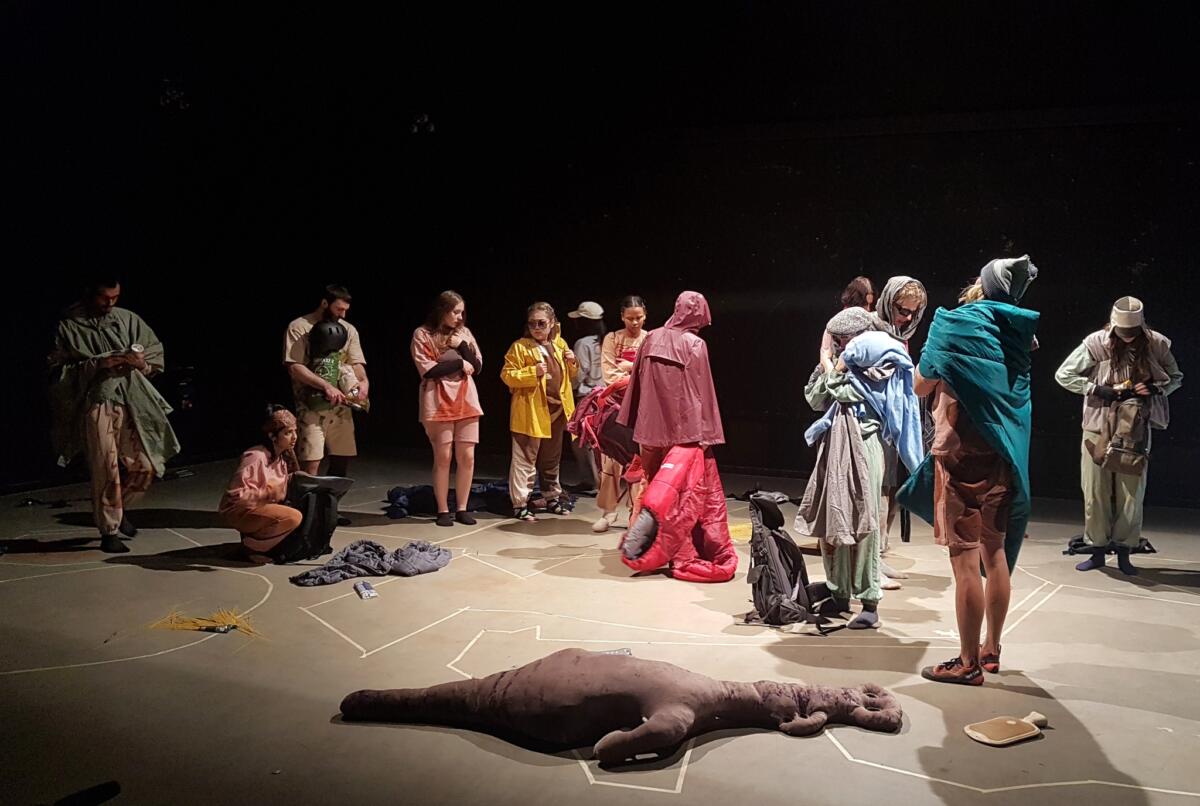
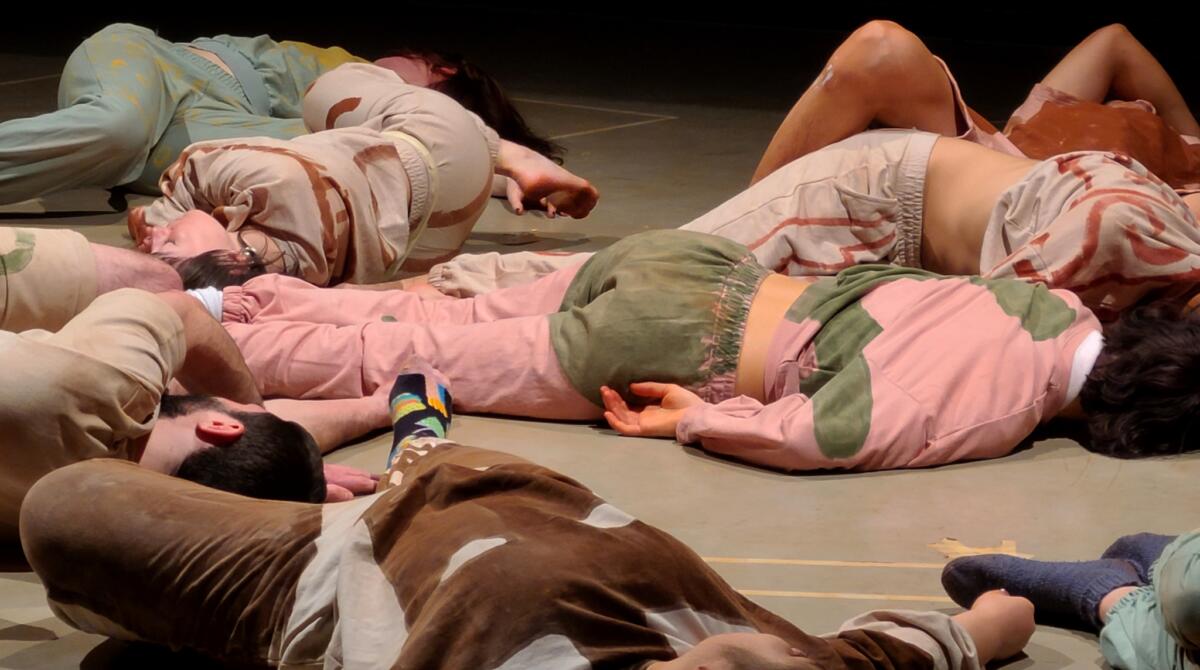
“Hope and anger are highly activating emotions; they can inspire constructive action,”[5] writes climate emotions researcher Panu Pihkala. Well Beings holds a space for discussing these difficult emotions related to climate change without being judged. At its best, it creates positive synergy, a space of shared energy. This level of optimism present in the show is not groundless; though humanity has been late in taking action on the climate catastrophe, according to scientific studies we are still barely inside a zone where we can manage the remaining long-term effects, but only if we do what is required of us in the short term[6]. In the film Adaptation (2023), Karga and collaborators imagine a new trajectory for humanity’s broken coexistence with nature. Using the potential of LARP (live action role-play), players take on roles going through different stages from climate angst to adaptation. An hour-long live recording ends as the players, reborn as a collective being, discover a new way of existing in a world.
Posthumanism/Animal studies, along with environmental humanities, narrates a history that enables a different understanding of time and space, and of our interconnectedness. They remind us of the imagined distinction between human and natural history, and this raises new possibilities for valuing different ways of knowing and learning. For instance, scientists consider not the land, but rather the ocean to be the largest recorder of human history. Repositioning ourselves as potential materials of the ocean archive might be one way to perceive ourselves less as isolated entities. In the article Blue History written by Jessica Lehman, the author refers to the ocean archive as “a record of life on Earth.” “We are all eventual material for the ocean archive: our bodies, our actions, our infrastructures,” writes Lehman[7]. Well Beings, likewise, is a journey from ancient figurines to speculative futures, recounting the ways the Earth’s terrestrial past extends into its present and future and asks for us to reconsider how we relate to and exist within the contemporary Earth ecosystem.
Edited by Ewa Borysiewicz and Katie Zazenski
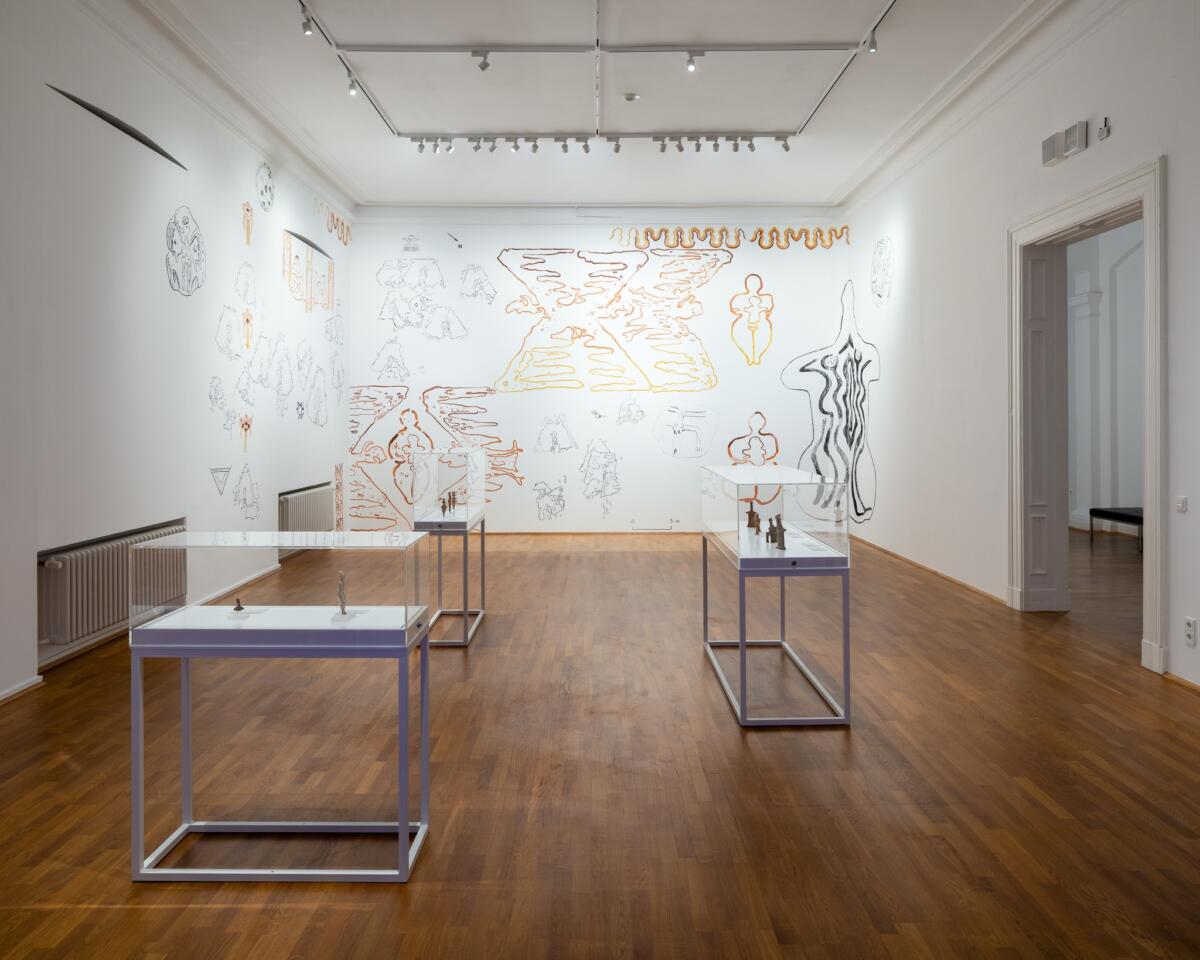

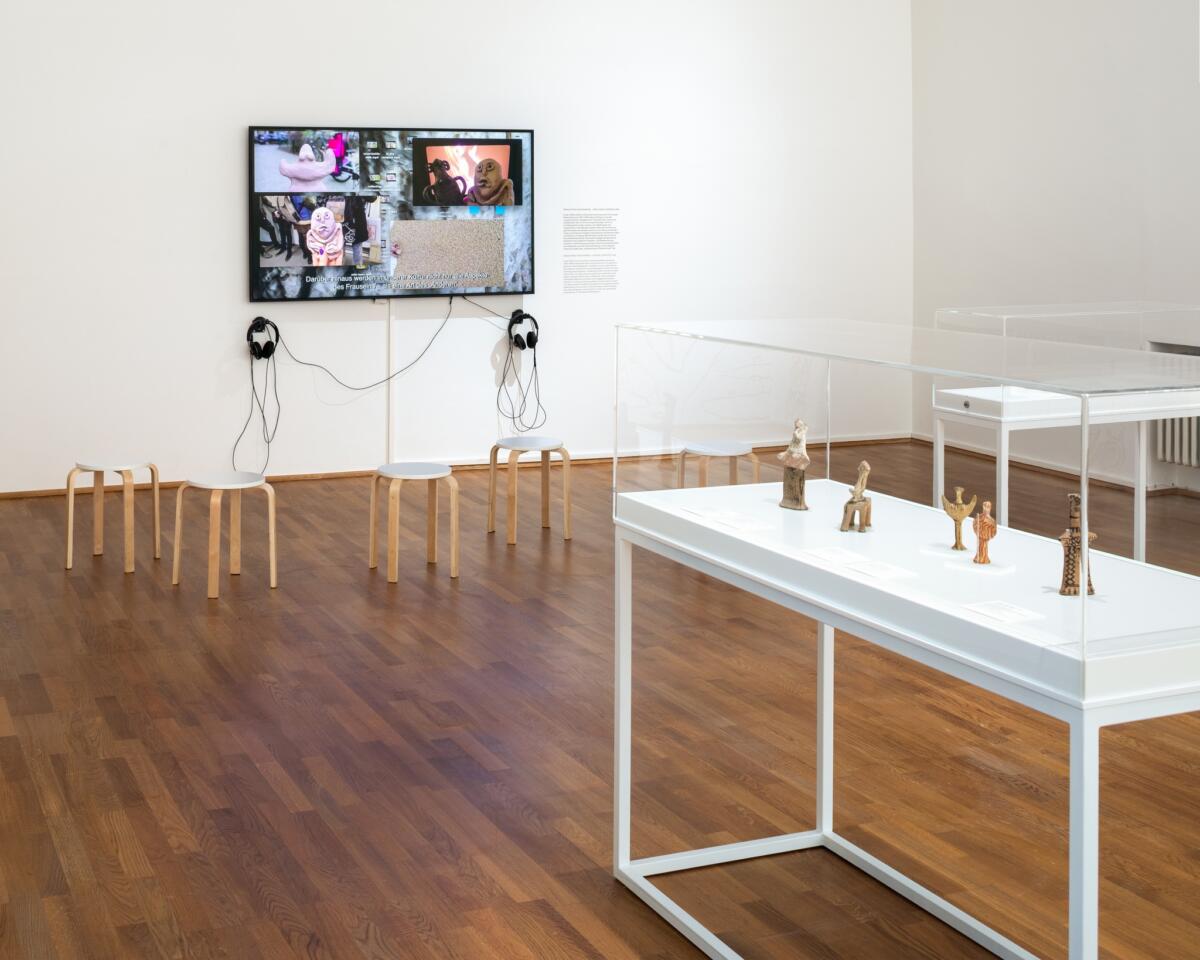
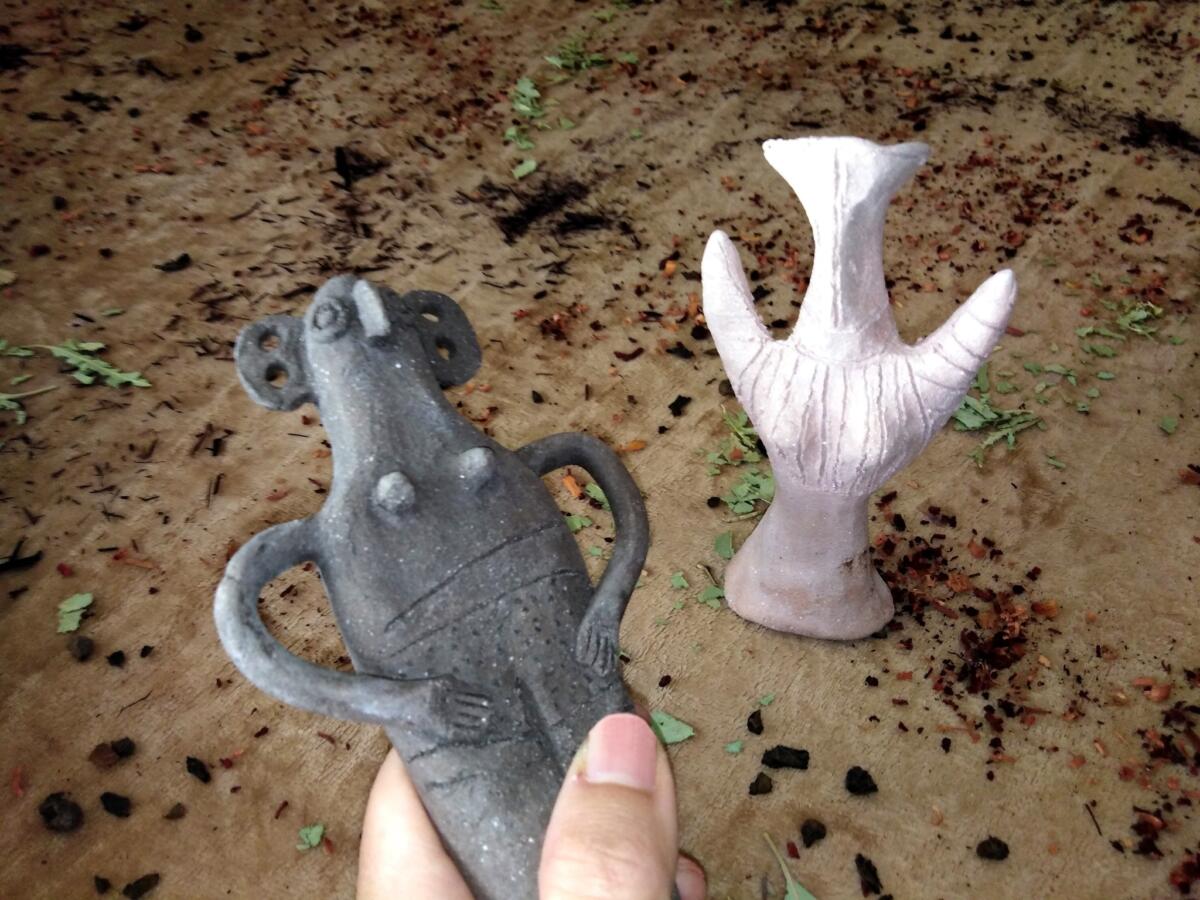


[1]In a 2020 survey by the American Psychological Association, more than two-thirds of American adults said they’d experienced “eco-anxiety.” The rate is higher in the UK, where around three in four adults (74%) reported feeling worried about climate change. https://www.ons.gov.uk/peoplepopulationandcommunity/wellbeing/articles/worriesaboutclimatechangegreatbritain/septembertooctober2022
[2]Valentina Karga, Prehistoric Posthumans – A Visual Storytelling. 2023, single-channel video.
[3]Ibid.
[4]Thomas Doherty & Panu Pihkala, Climate Change and Happiness [Podcast]. August 25, 2022.
https://climatechangeandhappiness.com/episodes/episode-16-varieties-of-hope-with-guest-elin-kelsey
[5]Ibid.
[6]Figueres, Christina & Carnac, Tom-Rivett, The Future We Choose: Surviving the Climate Crisis, 2020, Bonnier Books
[7]Jessica, Lehman. (2017). “Blue History.” The New Inquiry. https://thenewinquiry.com/blue-history/
Imprint
| Artist | Valentina Karga |
| Exhibition | Well Beings |
| Place / venue | Museum für Kunst und Gewerbe Hamburg |
| Dates | 24.3.-3.9.2023 |
| Website | www.mkg-hamburg.de/ |
| Index | Museum für Kunst und Gewerbe Hamburg Seda Yıldız Valentina Karga |
